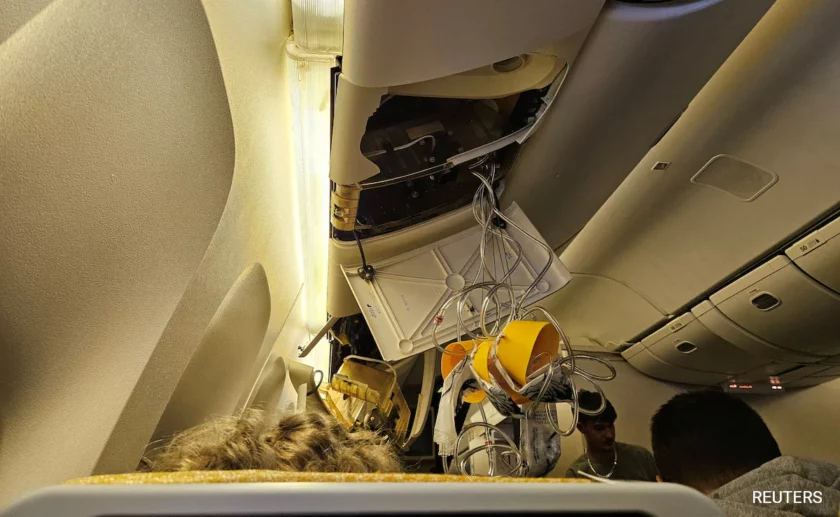Singapore Airlines Implements Stricter Cabin Rules After Fatal Turbulence Incident
Singapore Airlines Ltd. has implemented stricter cabin restrictions for turbulence following a recent incident where one passenger died and many were injured on a flight from London.
The airline announced on Friday that it is adopting a “more cautious approach” to turbulence management after Flight SQ321 experienced a sudden loss of altitude, leading to an emergency landing in Bangkok. The new measures include halting in-flight meal service when the seatbelt sign is on, suspending hot drinks, and requiring crew members to return to their seats and fasten seatbelts.
“While we will continue to review our processes, our priority remains the safety of our crew and passengers,” the airline stated.
The revised policy falls short of mandating seatbelt use throughout the flight, regardless of flying conditions, as some airlines do. Passengers are generally advised to keep seatbelts fastened during flights, only unbuckling them when it’s safe to move around.

The injuries suffered by passengers on Flight SQ321 highlight the significant vertical forces experienced during turbulence. Some passengers were thrown into the cabin roof, and personal belongings and items from the breakfast service were tossed around the aircraft.
According to Samitivej Srinakarin Hospital, 22 passengers have received treatment for spinal damage and six have suffered skull and brain injuries. Twenty passengers are in intensive care, and 17 have undergone surgery. Over 100 people required medical care in Bangkok immediately after the flight.
Despite the severity of this incident, airlines are unlikely to make seatbelt use mandatory at all times. Ron Bartsch, an ex-safety chief at Qantas Airways Ltd., believes that the rarity of fatalities and serious injuries from turbulence doesn’t warrant permanent restrictions that could deter passengers.
“In my memory, I can’t recall the last fatality associated with turbulence. It’s not a common occurrence,” said Bartsch, who now heads Sydney-based Avlaw Aviation Consulting Pty. He doesn’t anticipate major changes to airline operations regarding seatbelt policies.
Singapore Air stated that its pilots and cabin crew are well aware of turbulence hazards and are trained to secure loose items and equipment to reduce the risk of injury during such events.
Turbulence can result from a plane encountering strong air currents, caused by factors like pockets of hot air or powerful weather systems. At higher altitudes, aircraft may encounter clear air turbulence, which is hard to identify and can be caused by air masses with differing velocities.
The forces experienced during turbulence can be as dangerous as falling headfirst off a ladder or diving into a shallow concrete swimming pool, according to Rohan Laging, deputy director of emergency services at Melbourne’s Alfred Health hospital group.
Also Read, Tragedy Strikes: Boiler Explosion at Chemical Factory in Maharashtra’s Dombivli Causes Casualties












